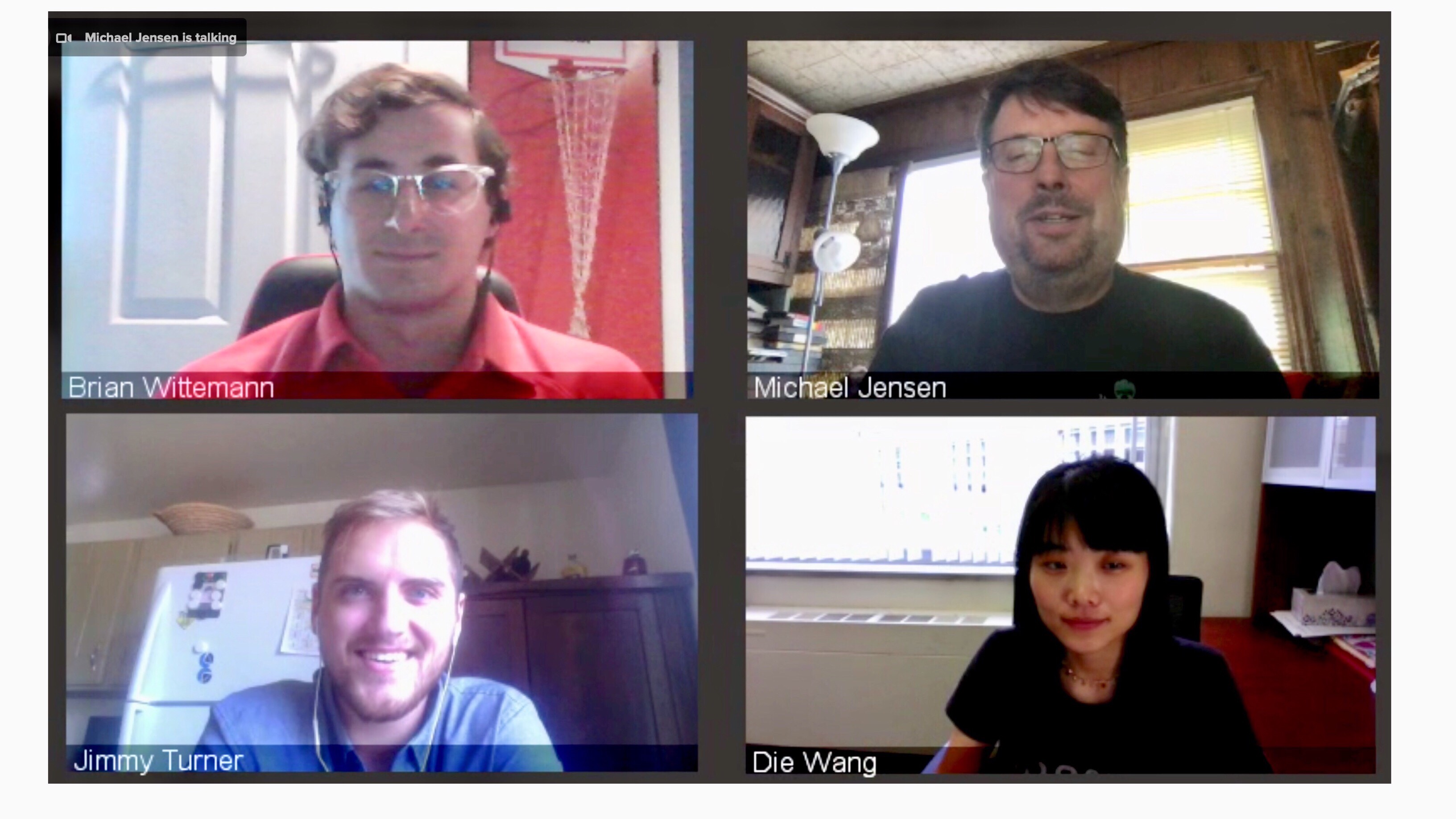TRACER Talk: Summer Interns Help With Campaign Preparations
Published: 21 September 2020
Editor’s note: Michael Jensen, a meteorologist at Brookhaven National Laboratory in New York, is the principal investigator for ARM’s TRacking Aerosol Convection interactions ExpeRiment (TRACER). The TRACER campaign is scheduled to start in April 2021 in the Houston, Texas, area. Dié Wang, an assistant environmental scientist at Brookhaven National Laboratory, is a convective processes researcher and a lead mentor for ARM weighing bucket rain gauges and disdrometers. Jensen sent in this blog post.

Each summer, Brookhaven National Laboratory (BNL) hosts more than 250 student interns from a range of backgrounds to work closely with scientists in many different disciplines across the laboratory programs. The summer of 2020 looked quite different from previous years, as the COVID-19 pandemic required the internship program to go virtual. In this virtual environment, BNL’s Cloud Processes Group hosted two interns under the mentorship of Mike Jensen and Dié Wang.
Jimmy Turner, a recent graduate from Colorado State University, and Brian Wittemann, a rising senior from the State University of New York at Oneonta, participated through the U.S. Department of Energy (DOE) Science Undergraduate Laboratory Internships program. They contributed to the TRACER practice forecasting exercises and analyzed measurements from existing networks in the Houston region, including the Texas Commission on Environmental Quality monitoring sites, which include surface meteorology observations, and the HoustonNet GPS network, from which precipitable water vapor is retrieved. Jimmy and Brian used these data sets to quantify signals of the local sea- and bay-breeze circulations within the TRACER domain.
Brian Wittemann, SUNY Oneonta
“Throughout my internship, I have learned countless lessons, from gaining experience with analysis of meteorological data using Python coding to practice forecasting with professional meteorologists and more.”
Brian Wittemann
Throughout my internship, I have learned countless lessons, from gaining experience with analysis of meteorological data using Python coding to practice forecasting with professional meteorologists and more. I had a great time helping to prepare for the upcoming TRACER campaign. My role in preparation consisted of identifying when a sea/bay breeze is impacting a location inside the Houston region through meteorological conditions, such as changes in temperature or wind. An example of one of my conclusions was that the meteorological constraint we determined through our data analysis identified sea-breeze occurrences 38.2% of the time. Therefore, a more accurate constraint should be assessed to mitigate synoptic-scale conditions.
This internship helped me grow in terms of research as well as figure out my desired future direction. I would like to thank DOE, ARM, BNL, Mike Jensen, and Dié Wang for the opportunity.
Jimmy Turner, Colorado State University
During my internship, I have learned many new skills, including writing codes to work with meteorological data sets and learning how to understand and interpret weather models. To learn more for the upcoming TRACER campaign, I was determining if it was possible to identify days with sea breezes using the variability in precipitable water vapor (PWV from GPS measurements) and other ground-based measurements, as well as to look at how a sea breeze affects water vapor in a more general sense. Some of my conclusions were that we were unable to consistently identify sea-breeze days based on variability in PWV because the impact of a sea-breeze front was often overshadowed by other environmental systems (cold front, low-pressure systems, etc.). There is evidence of a distinct increase in PWV following the passage of a sea-breeze front.
Overall, I had a great time working with Mike Jensen, Dié Wang, and Brian Wittemann during this internship as I learned a lot and gained valuable experience. I would like to thank DOE, ARM, BNL, and my mentors, Mike and Dié, for this unique opportunity.
***
The work that Jimmy and Brian did over their summer internship helped the BNL Cloud Processes Group gain valuable experience with these data sets, which will be useful to help quantify the regional variability in the thermodynamic environment during the TRACER campaign. Dié and Mike will extend their analysis toward a publication on the variability of the sea- and bay-breeze circulations in the Houston region and their influence on the local thermodynamics and cloud conditions.
Keep up with the Atmospheric Observer
Updates on ARM news, events, and opportunities delivered to your inbox
ARM User Profile
ARM welcomes users from all institutions and nations. A free ARM user account is needed to access ARM data.


















